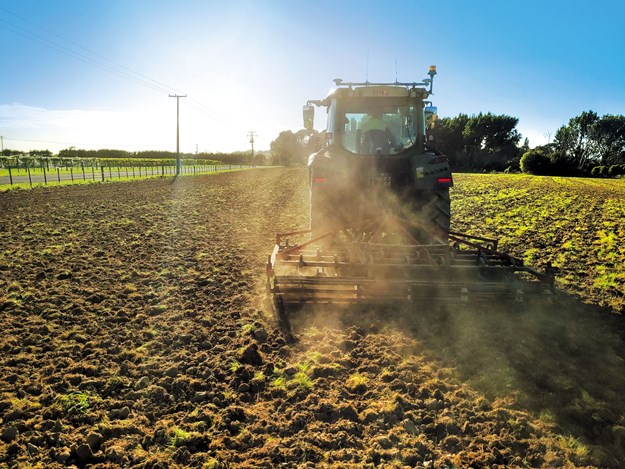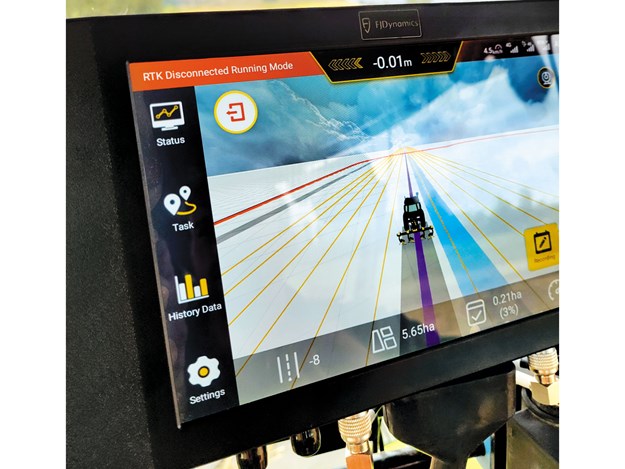Profile: FJDynamics Auto Steer
Technology is key to maximising efficiencies for farmers and ag contractors. Synergy Robotics explains how auto-steer can help save dollars and reduce operator fatigue
.jpg) |
|
Synergy Robotics’ on-site service and technical support
|
High input costs and the search for greater crop efficiency make
auto-steer technology pretty much a no-brainer. Most of the farmers I’ve talked to say the technology pays off in less than two years, eases fatigue, and lowers ongoing costs.
There’s never been a better time to invest in this technology. Farmers stinging from high input costs are open to anything that will save on the expense side of their business.
Every farmer I’ve spoken to who converted to auto-steer loves it. Costs can be as low as $10,000 and up to $50,000 for a full-blown RTK system.
If you’re new to this field, you quickly learn there are a number of players who specialise in this technology, however, new-kid-on-the-block FJDynamics offers impressive bang for your buck.
Why purchase auto-steer or auto-guidance systems in the first place?
- Reducing input costs – fuel, repairs, labour, fertiliser, chemicals, seed
- Improved timeliness – more acres per hour, more hours per day. It’s not that the technology allows you to drive faster, but straight, accurate rows will give you more time.
- Less operator error, reduced fatigue and stress, more time to watch the implement or make field notes.
- Potential increase in equipment efficiencies. These gadgets should squeeze more efficiency and thus more profit per acre.
Some questions you need to ask yourself before investing: What lines do you need to follow? In other words, do you have large fields with straight lines or lots of contours? What about pivots? What kind of tillage do you use? Auto-steer is perfect for strip-till because you program in the precise line to plant on after laying down fertilizer in the fall.
 |
|
Program in the precise line to plant after laying down fertiliser
|
Do you need year-to-year repeatability? RTK gives the highest accuracy but is not the lowest cost, which is where some farmers may want to be when they adopt the technology.
How accurate do you need or want to be, pass to pass? If you’re going to do multiple years, you’ll want RTK. How large of a geographic area do you operate over? Are there enough base stations if you cover a large area?
You also need to ask questions of your potential dealer: Do they know the systems? They need to provide service and technical support 24/7, 365 days a year.
The knowledge factor is key because things are changing rapidly and frequently.
What kind of repair/replacement inventory do they have? What about software upgrades; are they free or do they charge? Is there financing available? Is the system upgradeable to higher accuracy? Accuracy is addictive, most farmers say.
 |
|
Easy-to -understand and user-friendly on-board display
|
Do you need portability between power units and between brands? Is the on-board screen legible to all operators? Are controls conveniently located and easy to use and understand? Is it user-friendly?
When you do get a system, use it first in a less critical application so you can get the feel for it.
To improve return on investment, make as many uses of each system as feasible. Use auto-steer to chisel, apply NH3, field cultivate, plant, spray, harvest, and fertilise.
Often customers will put it in one tractor and use it only there for six months. You could move it and get value elsewhere.
No unit will work to 100% accuracy 100% of the time; you need to be dedicated to making the technology work for you. If you don’t like it or don’t want to adopt it, you’re not going to be happy with it.
Find new and used farm machinery for sale in NZ
Keep up to date in the industry by signing up to Farm Trader's free newsletter or liking us on Facebook


.jpeg)
.jpg)
.jpeg)

.jpg)
.jpeg)
.jpg)
.jpeg)

.jpg)
.jpg)
.jpg)
.jpg)
.jpg)

